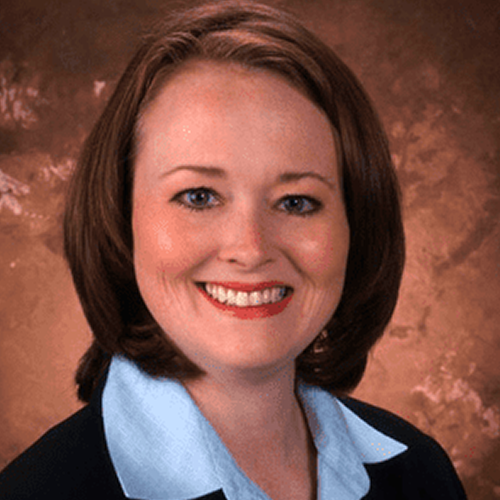
The Point Blog ARCHIVE
All articles found in the archive are more than three years old.
The purpose of this blog is to stimulate thought and discussion about important issues in healthcare. Opinions expressed are those of the author and do not necessarily express the views of CMDA. We encourage you to join the conversation on our website and share your experience, insight and expertise. CMDA has a rigorous and representative process in formulating official positions, which are largely limited to bioethical areas.
Grant me the serenity to accept the things I cannot change and courage to change the things I can…
September 20, 2018
by Autumn Dawn Galbreath, MD, MBA
How do you feel when it’s time to get ready for work? Are most mornings full of excitement about which patients are on your schedule and what you have to offer them? Or are most mornings filled with dread of fighting with your EHR, trying to keep your clinic running on time and not being able to get away from the office at a decent hour? What does your family see as you walk out the door? A doctor whose calling and ministry are to care for those in need, or a doctor who wishes he had chosen a different career path? If the latter, you are not alone.
A 2013 survey of physician financial health reports, “Dissatisfied doctors are labeling their careers million-dollar mistakes and less than half would choose to work in medicine again if they had the chance to do it all over again.” Reasons for physician dissatisfaction were “crushing” administrative burdens, lack of time with patients and overwhelming student debt.
Of course, that was a non-academic survey by the popular press, and it’s five years old. But a 2018 Medscape survey of 15,543 physicians reinforced the earlier survey’s results. The specialty reporting the highest rate of happiness at work was ophthalmology, weighing in at a jaw-dropping 37 percent. Give that a minute to soak in. Only 37 percent of ophthalmologists report being happy at work, and every other specialty is even lower than that! I find that statistic mind-boggling. Sadly, the unhappiness doesn’t stop when the office is closed for the day. Allergists are the happiest group outside of work, and they only hit 61 percent. How is it that a highly educated, goal-oriented, hard-working group of professionals is so unhappy? Only one-third of doctors are happy at work, and less than two-thirds are happy away from work, when we should be able to engage in the activities that most refresh and rejuvenate us. We are stressed out and burned out as a profession, with record numbers of us leaving clinical practice, either to retire early or simply to cut back hours. And this comes at a time when the nation faces a physician shortage crisis, with an estimated physician shortage of up to 120,000 by 2030.
Even Karen Sibert, MD, a physician well known for her 2011 New York Times article “Don’t Quit This Day Job,” in which she “argued that working part-time or leaving medicine goes against our obligation to patients and to the American taxpayers who subsidize graduate medical education,” has changed teams. In her recent article “Remember When Doctors Were Heroes?” she states that she has become sympathetic to American physicians’ malaise and its resulting departure from clinical practice:
“Today, young physicians start their careers in a world where their advancement and pay may depend on patient satisfaction surveys, and the Internet fuels distrust of medical advice. They spend their days functioning as data-entry clerks, with more face-time in front of a computer than with patients. Innovation is stifled. Their clinical decisions are reviewed for compliance with protocols, and their hospitals are run by administrators for whom the delivery of healthcare quickly and cheaply is the main objective. They fear replacement by mid-level ‘providers’ who can be trained to follow a protocol without question.”
What changes in the healthcare system have created this brave, new world Dr. Sibert describes? The factors are many and various, but it is generally agreed that the biggest contributors to job-related stress and burnout are lack of control of one’s work and a chaotic work environment. In medicine, we have both in spades. Regardless of how carefully your clinic is scheduled, you just can’t predict the man who walks in with chest pain or the woman who desperately needs to talk about her difficult home life. Every physician feels responsible for these patients, regardless of how much they disrupt his day. And as a Christian physician, your care for them goes well beyond an obligation. You want to help, serve, minister and listen…but even the best physician among us can’t help but wonder, “What does the rest of the day’s schedule look like, and how far behind am I now?” On a larger scale, we have even less control over the healthcare environment in which we practice, with Obamacare enacted, Obamacare partially reversed, Medicare reimbursement rates decreased, state CME requirements changed, malpractice attorneys trolling for patients with suboptimal outcomes, etc. For a group of people as driven and goal-oriented as we are, we certainly spend our days swimming in tides we cannot control.
What can we do, short of leaving practice, to reduce the chaos and increase our own control of our work lives? There are as many small adjustments to be made as there are small kinks in the day. We can learn more efficient techniques with our EHRs. We can hire a scribe. We can rearrange the flow of our clinics such that we only return phone calls at a designated time during the day. We can schedule free time on our calendars, and then follow through on the plan. We can focus on time with family, friends or spouses in order to refocus and refresh. All of these suggestions, which are widely available in the literature on stress and burnout, are good ones. They all decrease chaos and increase control in our workplaces. They all could improve, and even extend, the effective working lives of many physicians. But I think the most important thing we can do as individual physicians is address our own thoughts.
In life coaching, the CTFAR (circumstance-thought-feeling-action-response) thought model is a widely used tool in dealing with emotional responses. The thought model presupposes that there are some things about our lives and environments that are not under our control. When forced to live with a circumstance we cannot control, our thoughts about the situation are key to its ultimate impact on us emotionally. The thought model begins with the circumstance—that fact of life that I cannot change. Maybe the circumstance is an overbooked clinic. Or maybe an add-on case in the OR. Or an angry patient. Whatever it is, the circumstance is a reality that, in the moment, I cannot control. I can, however, control how I respond to it—and the key to that is in my thoughts about it. In the model, the circumstance drives my thoughts, my thoughts drive my feelings, my feelings drive my actions and my actions drive my results. On the day I walk into that overbooked clinic, I immediately have a choice: What will my thoughts about this situation be? If I think that “this always happens to me,” and “I know I won’t be able to get out on time,” and “I will be late for dinner again,” I effectively prep myself for frustration with my patients, anger at the scheduling staff and disappointment at holding up dinner.
These emotions lead to my actions: slamming charts, rushing with patients and getting angry with the scheduling staff. And my actions lead to my result: a really bad day. On the other hand, if I think that “I have a lot of opportunities to provide care to people who need me today,” and “my paycheck this month will reflect the extra hours I’m putting in,” and “if I touch base with my family right now we can all plan for a later dinner,“ I free myself up to feel compassion for my patients and empathy for my staff. I effectively prep myself to provide compassionate care for patients whose needs couldn’t wait for my next opening, calm and clear retraining of the scheduling staff and a late but pleasant family dinner. These actions lead to a different result: a day which is just as busy and physically tiring, but which becomes productive and meaningful.
Is the thought model a magic bullet for all the ills of a broken healthcare system? Of course not. It’s actually better than that. It’s a reliable tool for preparing yourself to deal with the ills of that broken system or anything else that creates stress and struggle in your life. It puts you in control of your response to a situation. It’s like the live-action version of Niebuhr’s well-known Serenity Prayer: “God, grant me the serenity to accept the things I cannot change, courage to change the things I can and wisdom to know the difference.” The thought model is a way of accepting the things we cannot change (the external circumstance) and changing the things we can (our own responses). It’s a secular psychology concept, but I think it’s biblical, too. 2 Corinthians 10:5 talks about taking every thought captive to Christ. I think the thought model is a practical tool that enables us to actually do that.
The thought model is certainly not the only tool we need to employ. There are times when it’s appropriate to change the system in our clinics, to challenge the policies that impact us as a profession and even to change jobs or careers. Those are valuable tools as well, and we should employ them when appropriate. The beauty of the thought model is that we can employ it to internally address our own attitudes and emotions, thereby changing our personal results, even as we pursue other avenues of change within the healthcare system.
NOTE: If you want more information on the thought model and working to change your own feelings and actions, there is a ton of information online. However, if you prefer working with an expert who can teach you these skills, CMDA now has a coaching ministry and a coaching training program you can check out! For more information, visit www.cmda.org/coaching.

